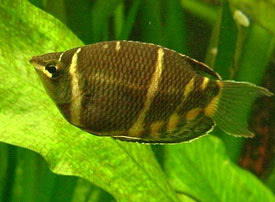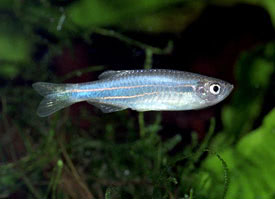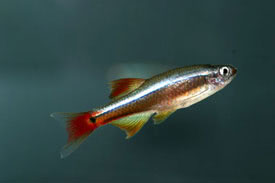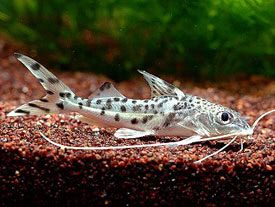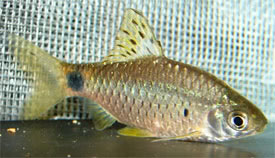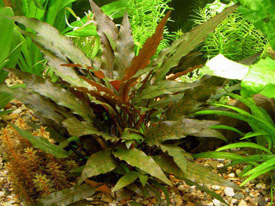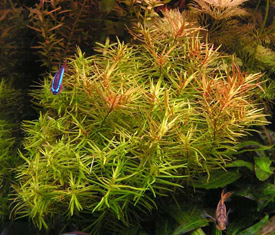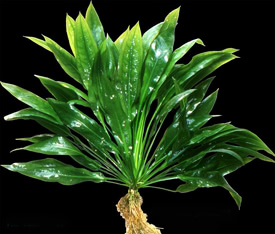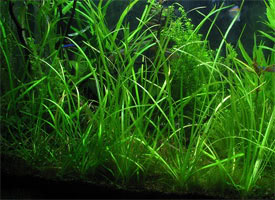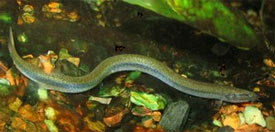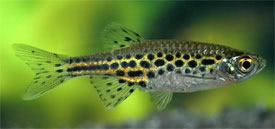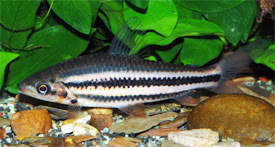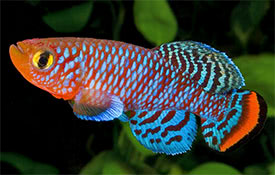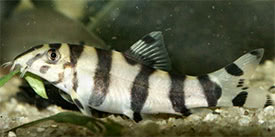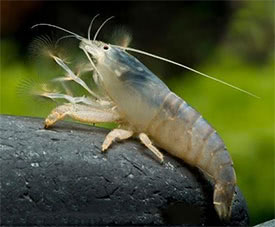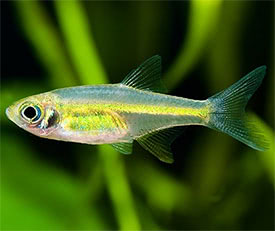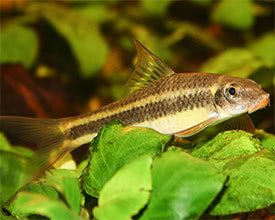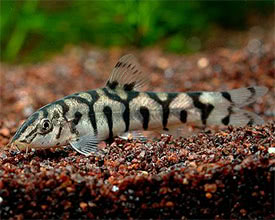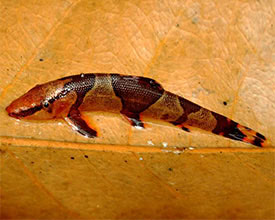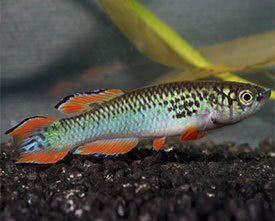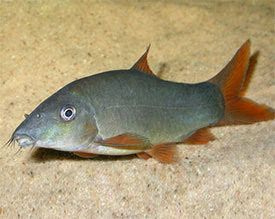
 Magyarul / Hungarian
Magyarul / Hungarian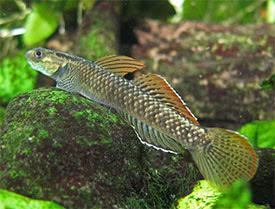
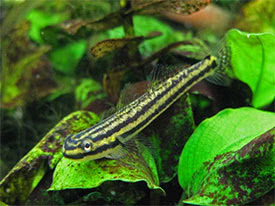
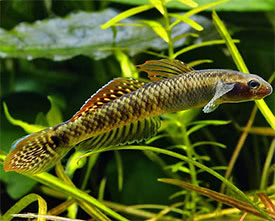
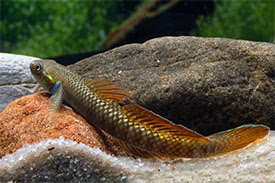
- Scientific name: Stiphodon ornatus
- Synonyms: Stiphodon elegans ornatus (Meinken, 1974)
- Common name: Rainbow Stiphodon Goby
- Group: Other fish
- Distribution: Asia; West Sumatra, Indonesia
- Size: 5-6.5 cm
- Biotope: Found almost exclusively in short coastal clearwater rivers and streams.
- Social behavior: A peaceful fish, that can be kept in a community tank with other similarly-sized species. Males are loosely territorial, especially during breeding, but several can be kept together in a larger aquarium. It is best to keep a single male with two or more females.
- Diet: Omnivorous; In nature it feeds on biofilm, algae and small invertebrates that found on the stones. In aquarium it will eat live, frozen and flake foods too, but their main diet must be algae.
- Breeding: Not possible in aquarium
- Tank: Minimum 70 litres
- Population: 1 male and 2-3 females for 70 litres
- Decoration: Most importantly their water must be clean and well-oxygenated, that can be achieved with an over-sized filter, or with additional powerheads. The substrate can be sand or small gravel with a layer of water-worn rocks and some driftwood to provide some hiding places. Lighting can be strong in order to promote the growth of algae.
- Temperature: 20-28 °C
- pH: 6.5-7.5
- Hardness: 2.0-12.0 dGH
- Lifespan: 2-3 years
Males are more brightly colored than females.
There are observations of courtship and even spawning in the aquarium, but no-one has managed to raise fry in captivity yet. This is due to its special breeding strategy, where adults live and spawn in freshwater streams, but the post-hatch larvae are washed downstream to the sea where the fry spend the first part of their life developing in marine conditions. Once they reach a certain stage of development they begin to migrate upstream in the river, and this can be big feat, as they need to get over waterfalls or other obstructions. Females are extraordinarily fecund for their size and can deposit as many as 10,000 eggs during a single spawning! The diameter of the eggs are 0.5 mm which attached to solid surfaces by filaments, often placed on the underside of rocks. Spawning is initiated by the male as he tries to lure females to his territory while fending off rivals. This usually occurs in a substrate burrow under rocks, whereto the female follows the male. After spawning the eggs are guarded by the male until the hatch, that occur in less than 24 hours. The fry hatch as undeveloped larvae with a large yolk sac attached and lacking a mouth, anus, or functioning eyes. The yolk sac is absorbed in 3-4 days and during that period they must reach the ocean. This must be the reason why they live near the saltwater in their natural habitat. The larvae initially exist among the plankton in a pelagic form before settle on the substrate within the shallow coastal zones. The length of the larval phase was found to vary between 78-146 days. After thsi they begin their journey upstream that can be several kilometres inland. The pelvic fins are fused into a disc designed for suction which allow the juveniles to adhere to hard surfaces and climb even vertical waterfalls. This journey can take several months but the fish are sexually mature within a year, so they can spawn on arrival to the breeding grounds.
http://www.seriouslyfish.com/species/stiphodon-ornatus/
http://www.fishbase.org/summary/Stiphodon-ornatus.html
https://aquaticarts.com/products/rainbow-goby








